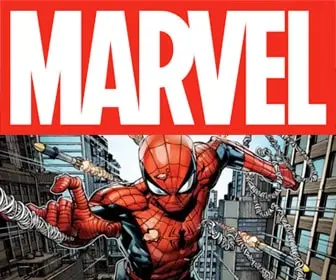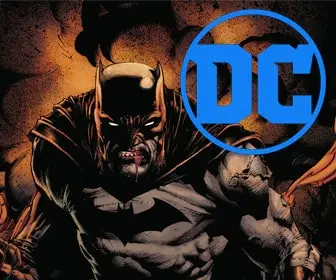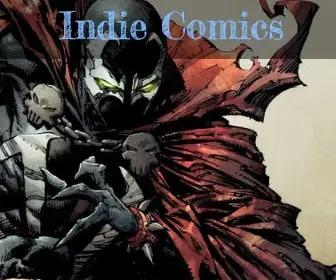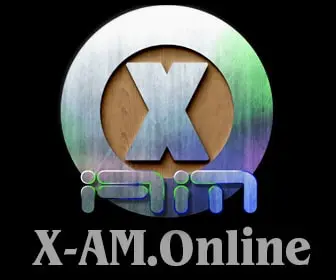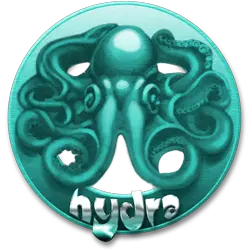
Protect Your Creation: Navigating Copyright and Legalities for Indie Comic Creators

You poured your heart and soul into your comic. You crafted amazing characters, built incredible worlds, and drew every panel with passion. Your comic is unique, a piece of you. Naturally, you want to protect it. Understanding copyright and basic legal concepts becomes crucial as an independent comic creator. It helps you keep ownership of your hard work and avoids tricky situations with collaborators or those who might try to steal your ideas.
This isn’t about scaring you; it’s about empowering you! Knowing these legal basics helps you make smart decisions, especially as you navigate the exciting world of indie publishing. Let’s break down what you need to know.
Understanding Copyright: Your Automatic Shield
First, let’s talk about copyright itself. It sounds complex, but the core idea is simple: when you create an original work, you automatically own a copyright in it. This applies to your comic script, your character designs, your finished pages, and even your overall story.
What Copyright Does: Copyright gives you, the creator, exclusive rights. This means only you can:
- Reproduce your work: You control making copies of your comic.
- Distribute your work: You decide who sells it, where it sells, and how it reaches readers.
- Create “derivative works”: You control adaptations. This means if someone wants to make a movie, a video game, or a toy based on your comic, they need your permission.
- Publicly display or perform your work: You control how it appears to the public.
Automatic, But Registration is Stronger: In the United States, copyright automatically attaches the moment you create and fix your work in a tangible medium (like writing your script on paper, drawing on a page, or saving a digital file). You don’t need to put a little “©” symbol on it for the copyright to exist, although it’s a good idea to do so.
However, relying only on this automatic copyright has limitations. If someone steals your work and you want to sue them in court, you usually must have registered your copyright with the U.S. Copyright Office. Registration provides a public record of your ownership and gives you stronger legal standing, including the ability to collect more damages if you win a lawsuit.
When to Register: You can register your copyright at any point. However, registering before you publish your comic or within three months of its first publication gives you the strongest legal protections. This timing can make a big difference if you ever need to defend your rights in court. The U.S. Copyright Office website (copyright.gov) provides clear instructions and forms for registration. You typically file it as a “visual arts work” or “literary work” depending on how you see your primary creation. For a full comic book, it often falls under a literary work category.
Collaboration and Ownership: Whose Story Is It Anyway?
Many indie comics are team efforts. A writer might work with an artist, a colorist, and a letterer. This collaboration brings fantastic comics to life, but it also introduces important legal questions about ownership.
The “Joint Work” vs. “Work-for-Hire” Debate:
- Joint Work: If you and another creator (like a writer and an artist) intend to create a single, unified work, and each of you contributes copyrightable material, you often create a “joint work.” In a joint work, each creator typically owns an equal, undivided share of the entire copyright, unless you agree otherwise in writing. This means each joint owner can use or license the entire work (e.g., sell copies of the comic) without the other’s permission, though they must account for any profits to the other owners. This default can get messy if you don’t communicate clearly.
- Work-for-Hire: This is a crucial concept. If a work qualifies as a “work made for hire,” the person or company who commissioned or hired the creator automatically owns the copyright, not the creator themselves. The law defines “work for hire” in two main ways:
- Employee creating within their job scope: If an artist works for a comic book company as an employee and creates a comic as part of their job, the company owns the copyright.
- Specially commissioned work under specific categories: If a freelancer creates a work for you, it can only be “work for hire” if it falls into one of nine specific categories listed in copyright law (like a contribution to a collective work, a translation, or an illustration for a collective work) AND you have a written agreement expressly stating it is a work made for hire.
Why this matters for indie comics: Most indie creators work with freelancers, not employees. Because comics are often considered “joint works” by default and usually don’t fit neatly into those nine specific “work-for-hire” categories for freelancers, a “work for hire” agreement for a comic book must be extremely carefully drafted. Many legal experts argue that a single comic book or graphic novel generally does not automatically qualify as a “work for hire” unless it’s explicitly a “collective work” (like an anthology with different creators on each story).
How to avoid problems: Put everything in writing! Seriously, every single collaboration needs a clear, written agreement. This document outlines:
- Who owns what: Clearly state who owns the copyright to the story, characters, art, and the finished comic. Does the writer own the story, and the artist own the art, with shared ownership of the finished comic? Or does one party own everything?
- What rights each party has: Can the artist use their character designs in a different project? Can the writer adapt the story into a novel?
- Payment terms: How and when do you pay collaborators? Do they get a flat fee, a percentage of sales, or both?
- Credits: How will you credit everyone involved?
- Deadlines: When do different parts of the project need to be finished?
- Dispute resolution: What happens if you disagree?
Example Scenario: If you are a writer and hire an artist, and you want to own all rights to the finished comic, including the art, you must have a clear written “work-for-hire” agreement or a comprehensive “assignment of rights” agreement. An assignment of rights means the artist creates the work, owns the copyright initially, and then transfers (assigns) all those rights to you. This is often a safer and clearer approach for indie comics than relying solely on the “work for hire” definition, especially given the complexities of comic book creation under copyright law.
Always remember: A handshake deal is not a legal deal. Protect yourself and your collaborators by getting everything in writing.
Protecting Your Characters: Trademarks and Copyright
Your characters often become the most recognizable part of your comic. Think about Superman, Spider-Man, or Batman – their names and appearances are iconic. These are protected not just by copyright, but often also by trademark.
- Copyright: Protects the expression of your character (the drawings, the written story they appear in).
- Trademark: Protects brand names, logos, slogans, and distinctive character names or visual designs that identify the source of goods or services. For example, “Superman” as a name for a comic book series is a trademark. The “S” shield logo is also a trademark.
Why this matters for indie creators: If you create a unique character and plan to build a brand around them (merchandise, spin-offs, etc.), consider registering a trademark for their name or distinctive visual elements. This gives you exclusive rights to use that name/logo for your products and services, preventing others from creating confusion in the market. Trademark registration is separate from copyright registration and involves the U.S. Patent and Trademark Office (USPTO). It’s generally more expensive and complex than copyright registration, so many indie creators wait until their comic gains traction before pursuing it.
Avoiding Infringement: Don’t Use What You Don’t Own!
Just as you want to protect your own creations, you must respect the creations of others. Copyright infringement means using someone else’s copyrighted work without their permission. This is a big deal and can lead to serious legal trouble.
Common pitfalls for indie creators:
- Using copyrighted characters/designs: You cannot draw and publish a story about Spider-Man or Batman, even if you draw them yourself. Marvel and DC own those characters. This extends to fan art you sell if it directly uses their copyrighted characters in a commercial way.
- Copying art styles/compositions too closely: While artists learn by studying others, directly copying another artist’s unique style or specific panel layouts can border on infringement. Aim for inspiration, not imitation.
- Using copyrighted music/images: If you create a comic book trailer or use images in your marketing, make sure you have the rights to any music or stock photos you include.
- Adapting existing stories: You cannot create a comic book adaptation of your favorite novel or movie unless you obtain permission from the copyright holder.
The “Fair Use” Myth: You might hear about “fair use,” which allows limited use of copyrighted material without permission for purposes like criticism, commentary, news reporting, teaching, scholarship, or research. However, fair use is a complex legal doctrine that courts decide on a case-by-case basis. It’s not a blanket permission to use whatever you want. For example, parody is often protected under fair use, but a direct copy for profit is usually not. For indie comic creators, relying on fair use for your main content is very risky. Always seek permission or create original material.
Public Domain: A Treasure Trove of Inspiration
Here’s some good news! Not all creative works are protected by copyright forever. Eventually, copyrights expire, and works enter the public domain. This means anyone can use, adapt, and build upon these works without needing permission or paying royalties.
What enters the public domain?
- Works published in the U.S. before 1929 are generally in the public domain.
- Works published in the U.S. between 1929 and 1978 may be in the public domain if their copyright was not renewed.
- Works created by the U.S. government (e.g., NASA images) are usually in the public domain immediately upon creation.
How this helps you: You can use characters and stories from the public domain as inspiration or even direct source material for your comic!
- Classic Literature: Want to create a comic based on Sherlock Holmes, Alice in Wonderland, Dracula, or Frankenstein? Go for it! These characters and their original stories are in the public domain.
- Mythology and Folklore: Gods, goddesses, monsters, and heroes from ancient myths and folk tales are free for you to reinterpret.
- Early Comics: Some very early comic characters and strips from the golden age of comics (e.g., characters published before 1929, or some where copyright was not renewed) have fallen into the public domain. Websites like the Digital Comic Museum archive many of these.
Crucial Caveat: While the original stories and characters may be public domain, later adaptations of those characters are often still copyrighted. For example, the original “Alice in Wonderland” novel is public domain, but Disney’s specific animated version of Alice is copyrighted. If you create a comic about Sherlock Holmes, you can use the original stories, but you can’t use elements unique to recent movies or TV shows unless you get permission. Always do your research!
What About Creative Commons Licenses?
You might encounter “Creative Commons” (CC) licenses. These are special licenses that creators can choose to apply to their work. They work within copyright law but allow creators to share their work with “some rights reserved” instead of “all rights reserved.”
How CC licenses work: A creator applies a CC license to their work, granting others certain permissions upfront. For example, some CC licenses allow others to:
- Use the work for non-commercial purposes.
- Adapt the work, as long as they also share their adaptation under the same license.
- Use the work as long as they provide attribution (credit).
For indie comic creators: You might use CC-licensed material in your comic (e.g., a background texture an artist released under CC) or you might decide to release your own comic under a CC license to encourage sharing and adaptation. It’s a powerful tool for building community and getting your work seen, but always understand the specific terms of the CC license you use or apply.
Final Word: Be Smart, Be Protected!
Navigating copyright and legalities might not be as fun as drawing explosions or writing witty dialogue, but it’s an essential part of becoming a professional and successful indie comic creator. By understanding these basics:
- You protect your creative output.
- You establish clear expectations with collaborators.
- You avoid accidentally infringing on others’ rights.
- You make informed decisions about how your work is shared and distributed.
This article gives you a solid starting point, but remember, this is not legal advice. Laws change, and every situation is unique. If you have complex questions or need to draft important agreements, consult with an attorney who specializes in intellectual property or entertainment law. Organizations like the Comic Book Legal Defense Fund (CBLDF) also offer resources and support for creators facing legal challenges.
Your story is worth protecting. Go forth, create boldly, and safeguard your awesome work!




